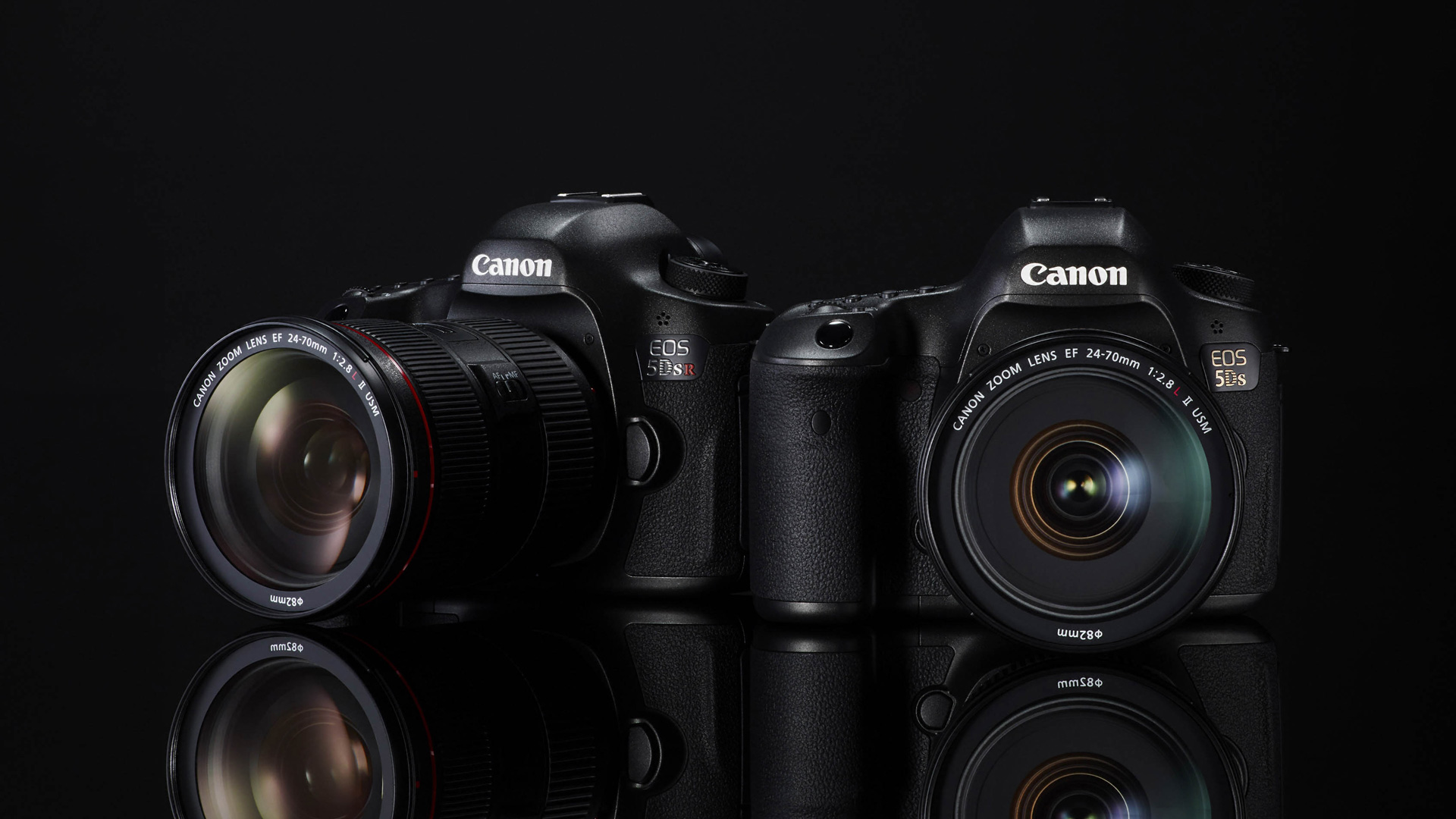Why you can trust TechRadar
Outwardly the 5DS looks the same as the 5D Mark III, but there have been some changes to the build of the camera to reduce vibrations which could have significant implications for such a high resolution camera. Canon has used a more rigid resin for the body, for example, and the both the base plate and tripod mount have been strengthened to give a more solid platform.
Shutter damping
In addition, the mirror movement is controlled by a cam mechanism to avoid the slap that is typical of DSLRs and can lead to blur-inducing mirror-shake. It makes a noticeable difference to the sound and feel of the camera in use. The 5D Mark III used to seem impressively quiet, but in comparison to the 5DS it's quite loud. The movement inside the 5DS also sounds slower and there were a few occasions early on in this test when I had to check the shutter speed to make sure I hadn't set it lower than I intended. When you're hand-holding the cameras the mirror movements of the 5DS do feel a little less violent than the 5D Mark III's. I could still feel that there was something going on inside, but it feels steadier and better dampened.
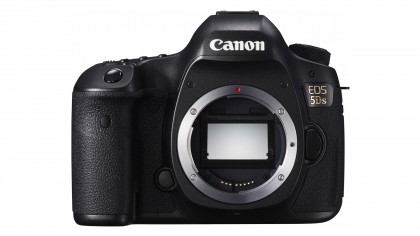
Controls and layout
Externally, the only thing that separates the 5DS from the 5D Mark III is the name badge on the front. The cameras have exactly the same shape and control layout. This means that you can slip seamlessly between the two if you want, perhaps using the 5D Mark III to shoot sport and action or video, and the 5DS for detail-rich subjects like landscape, still life and macro.
With a 24-70mm f/2.8 lens mounted you wouldn't describe the 5DS a lightweight, but the deep front grip and rear thumb ridge make it feel very secure and comfortable in your hand.
I spent some time comparing the texture of the rubber-like coatings on the 5DS and 5D III and I think the 5DS's is slightly finer, but there's very little in it.
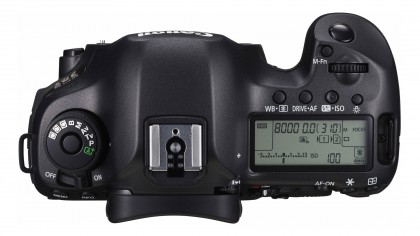
On the top-plate there's the familiar mode dial giving a quick route to the available exposure modes including Program, Aperture Priority, Shutter priority, Manual and Bulb. Although it is an advanced camera there is still the option to use Scene Intelligent Auto mode. When this is selected the camera analyses the scene and selects appropriate settings automatically.
As usual with a high-end camera, the 5DS has a secondary LCD screen on the top-plate that displays key settings. This useful when shooting low-level or table-top subjects because, unlike on the screens on some Canon DSLRs, this one is fixed.
Focus modes
By default the autofocus point is set by pressing the AF Point Selection button near the thumb rest on the back of the camera and then using the mini-joystick-like Multi-controller. However, I find it useful to use the Custom Controls settings to enable me to use the Multi-controller to set AF point directly.
There are six AF Area Selection modes; Single-point Spot AF (Manual Selection), Single-point AF (Manual Selection), AF Point Expansion (Manual Selection), AF Point Expansion (Manual Selection, Surrounding 8 Points), Zone AF (Manual selection of Zone) and 61-Point Automatic Selection AF. These are selected by pressing the AF Point Selection button on the back of the camera and then using the Multi-function (M-Fn) button near the shutter release to toggle through the options. This is straightforward and the AF points illuminate in the viewfinder to indicate which option is selected.
Like the 5D Mark III, there's also a dedicated autofocus section in the main menu. The first page of this has a collection of options to set the AI Servo (continuous AF) mode characteristics, varying aspects such as tracking sensitivity, acceleration/deceleration tracking and AF point switching. Although there are six sport-orientated 'Case Studies' or setup arrangements that enable users to select the correct options for the subject, some of the differences between them seem very subtle and you need to have a good understanding of the subject, the camera and your own capabilities to get the best from it. Thankfully for many, the 'Case 1' is a 'versatile multi purpose setting' that makes a good starting point until you're more comfortable with the controls.
Viewing system
Being a full-frame DSLR, the 5DS has a large optical viewfinder. This is nice and bright and shows 100% of the scene so there are no nasty surprises hidden around the edges of images. Like the 5D Mark III, it's possible to display an electronic level in the viewfinder as well as on the main screen, but unlike the 5D Mark III, the 5DS viewfinder uses a dedicated icon rather than using the AF points. This means the level stays visible even when the shutter release is pressed to focus the lens and you can ensure the camera is level at the moment the shutter release is pressed home.
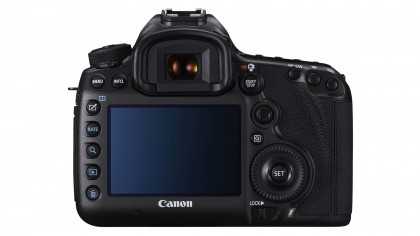
The 5DS's viewfinder is also capable of indicating the cropping when shooting 1:1 (square) format as well as the 1.3x and 1.6x crop images. For some reason it's not possible to shoot 16:9 or 4:3 images when using the viewfinder, only when using Live View.
While it is possible to focus manually while looking through the viewfinder, it's easier to see fine details on the 5DS's main screen and use Live View mode. Live View mode is especially well suited to shooting still life and macro scenes when the subject is motionless, and these are high on the list of likely uses for the camera. This makes it especially disappointing that Canon hasn't given the 5DS a vari-angle touch-screen like some models further down its line-up, including the 750D, 760D and 70D. Vari-angle screens make it much easier to compose images in Live View mode when you're shooting at awkward angles. The touch-control afforded to these cameras wouldn't go amiss here either.
When using manual focus in Live View mode, the on-screen image can be magnified by 6x or 16x. This makes details clear, but you become acutely aware of how much wobble is introduced by touching the camera – it's a good reminder to engage Mirror Lock-up mode. The ability to set the shutter to fire following a set delay after the shutter release is pressed means that a remote release is unnecessary in many situations. Of course if there was Wi-Fi connectivity built-in the camera could be controlled remotely using a smartphone.
Customization
I found it was useful to assign Mirror Lock-up to the My Menu list. Helpfully, you can create up to 5 My Menu tabs in the Menu and each one can have up to six features assigned to it. To help with remembering what's where, the My Menu tab names can be customised. It's also possible to set the Menu to open at the My Menu tab.
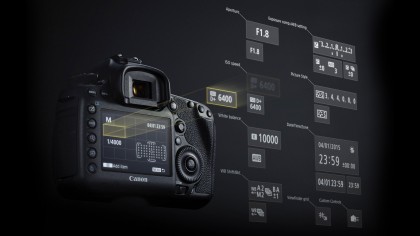
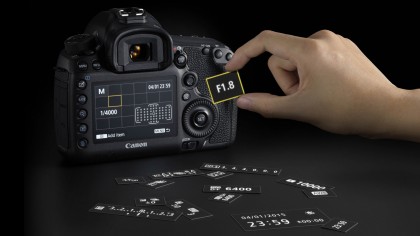
I find the options in the 5DS's Quick menu logical and use it on a frequent basis to change key settings, however, it's possible to customise the screen to remove any options that you don't use and change the size of the icons representing those that you do. It's a nice touch.
I also appreciate the Rate button that allows you to add a star rating quickly to your best or favourite shots when you're out shooting so you can find them speedily once they are downloaded. If you don't use it for rating, however, it can be customised to reach something else.
The HDR Mode, accessed via the Creative Photo button above the Rate button on the back of the camera, is also useful because it can be used as a form of exposure bracketing, recording raw and JPEG files simultaneously if you choose. This means you can create your own HDR image if you don't like the automatically created composite the camera produces.
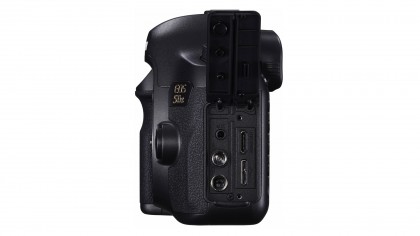
Although the 5DS isn't the natural choice for videographers, it's worth noting that like the 5D III, the large Quick Control dial on the back of the camera can be used as a touch-control so that near silent adjustments can be made to aspects such as exposure and audio recording level.
